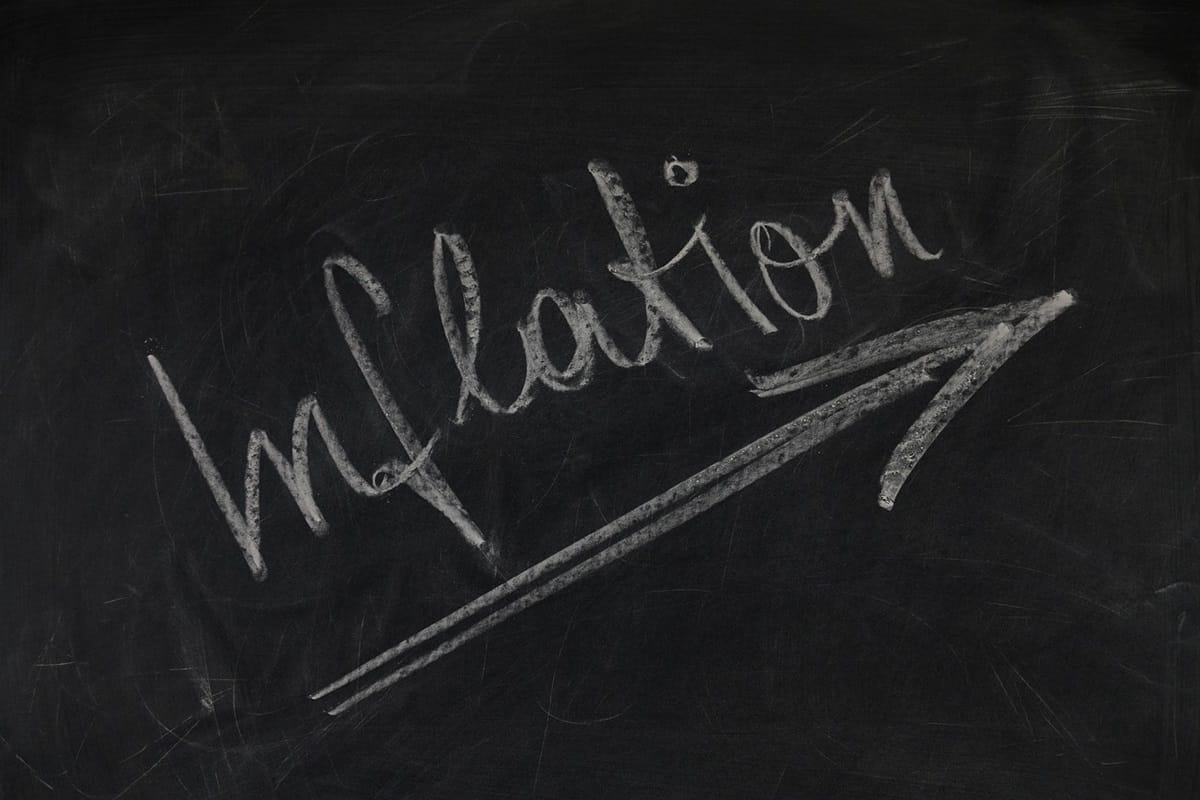In the eurozone, an acceleration in the rate of inflation was recorded, which exceeded preliminary expectations regarding the dynamic of this process.

The mentioned result has somewhat weakened the prospects that the European Central Bank will decide on cutting interest rates shortly. It is worth noting that during the spring, the opinion circulated in the expert community and in the markets that lowering the cost of borrowing by Europe’s main financial regulator in June is a completely realistic scenario that is appropriate in the context of the present economic situation. The new inflation data has become something like evidence to a certain extent against such points of view on the prospects for monetary policy easing, but not a fact that definitively cancels the corresponding estimates.
In May, consumer prices in the eurozone showed an increase of 2.6% compared to the result for the same period last year. The relevant information was released by Eurostat on Friday, May 31. It is worth noting that in April, the mentioned indicator showed an increase of 2.4% year-on-year.
Analysts surveyed by the media expected that consumer prices in the eurozone in May would be 2.5%. The corresponding assessment of the prospects of the dynamic of the relevant indicator was a kind of consensus forecast. The final result turned out to be less optimistic but did not demonstrate what can be described as a fundamental difference between expectations and reality.
The consumer price growth indicator, which also includes data on the cost of food and energy, increased by 2.9% year-on-year in the eurozone in May. This result also somewhat clouded the prospects for easing the ECB’s monetary policy.
Officials of Europe’s main financial regulator said the uneven price growth. The ECB’s inflation target is at the level of 2%. At the same time, officials at the official level have not yet announced the abandonment of the intention to cut the deposit rate next week. Currently, the mentioned indicator is at a record high of 4%. If the ECB does make the planned decision, despite data on consumer price growth in May, it will mean that the European financial regulator will outpace the Federal Reserve and the Bank of England as part of monetary policy easing actions.
Markets still continue to expect interest rates to be cut in the eurozone as early as June. In this case, the prevailing view is that the corresponding indicator would be lowered by a quarter point next week. At the same time, expectations have to some degree weakened that the ECB will cut interest rates several more times before the end of the current year. Similar forecasts are still circulating in the space of assessments of the most likely options for action by the European financial regulator but on a very limited scale. Currently, traders are mainly betting that the ECB is cutting interest rates twice this year. Also, with a probability of 25%, the prospect of third in 2024 lowering of the cost of borrowing is estimated.
ECB Chief Economist Philip Lane said this week that it is appropriate to make changes to the monetary policy strategy that will make this concept less restrictive. He noted that such a decision would be appropriate even if the inflation rate increased slightly. At the same time, Philip Lane underlined that the ECB will have to maintain certain restrictions throughout 2024. He made the corresponding statement during a conversation with representatives of the media.
According to Philip Lane, the ECB can move towards easing monetary policy, but at the same time remain in the territory of restrictions. He said that already at the meeting of the European financial regulator scheduled for June 6, a decision may be made to lift the upper level of restrictions, if there are no surprises. Whether the ECB took the data on consumer price growth for May as the very surprise that is a barrier to monetary policy easing will become known next week. At the same time, the increase in the mentioned indicator in the current month does not go beyond the vision of the most appropriate ECB strategy by Philip Lane, which allows for a slight increase in the inflationary process.
The opinion is spreading in the markets that after the likely lowering of the cost of borrowing in June, the European financial regulator will pause actions to ease monetary policy until September. At the same time, there is no unambiguous certainty in the context of this issue yet.
The mentioned opinion observed in the markets is largely consistent with the position of the so-called hawks among ECB officials, including Joachim Nagel and Isabel Schnabel. It is worth noting that most Governing Council members do not publicly declare their vision of the most appropriate strategy for the European financial regulator in the context of making changes to monetary policy.
Philip Lane expects that next year inflation will noticeably approach the target level, against which a downward trajectory of interest rates will form. According to him, in the context of the materialization of such a scenario, there will be another discussion about the ECB’s action strategy.
It is worth noting that progress in countering inflation in the eurozone is obvious. The price increase has already moved significantly away from the peak of more than 10%. At the same time, the mentioned progress, which is an objective fact of economic reality, has recently begun to demonstrate what can be described as the dynamic of the slowdown. In the context of the inflation process in the eurozone, the focus shifted from external challenges, among which the rise in energy prices turned out to be the most sensitive, to internal factors, including wages, productivity, and corporate profits.
The current volatility in the mentioned region is partly due to unfavorable statistical effects. Last year, the German leadership launched cheap transport tickets throughout the country. In May, the corresponding indicator increased. In this case, the impact factor was, to a certain extent, the fact that in 2024 the significant decrease in energy prices observed last year was not repeated.
It is worth noting that the German economy is one of the largest in the eurozone, so the situation in this system is of more global importance. In May, consumer prices in Germany increased by 2.8% compared to the result for the same period last year. The relevant data were published by the German statistics office. It is worth noting that the acceleration of inflation in Germany has been observed for the second month in a row. In April, consumer prices in this country increased by 2.4% year-on-year. The consensus forecast of economists surveyed by the media provided that the specified indicator would increase by 2.7% in May.
The yield on 10-year German bonds rose by six basis points, reaching 2.65%, which is the highest level in the last half of the year. The yield on two-year bonds is near a six-month high of 3.09%.
Economist Martin Ademmer says that headline inflation in Germany rose markedly in May, but the general trend still continues to have a downward vector of the dynamic. According to the expert, inflation will continue to decline in the coming months and will drop below the 2% mark by the end of 2024. This is a very ambitious forecast but still does not belong to the category of unambiguously unrealistic scenarios. Martin Ademmer says that core and services inflation is likely to be more stable, but will still show a certain decline before the end of 2024.
Last week, the Bundesbank published a report that predicts that, with a high degree of probability, the price growth rate will be at a slightly higher level over the next few months. This report also notes that wage increases in Germany have recently exceeded expectations, which may cause significant price pressures in the service sector to persist for a longer period. It is worth noting that the most intensive wage growth in this country was observed at the beginning of the year. At that time, negotiated wages increased by 6.2% year-on-year and rose by 4.7% compared to the average for the entire eurozone.
It is worth noting that not only in Germany but also in other European countries, there is currently an intensification of inflation rates. For example, in May in Spain and France, price growth exceeded preliminary expectations for the dynamic of this indicator. In Italy, inflation showed a more moderate rate of increase compared to the intensity that was recorded in April.
Currently, in the eurozone, the most fundamental inflation concerns are directed towards the services sector, where prices rose by 4.1% in May. This result is explained by the fact that companies are more susceptible to increased labor costs. However, at the same time, consumer demand is growing in the eurozone.
Returning to the topic of forecasts regarding the likelihood of easing the ECB’s monetary policy this year and the possible scale and intensity of such decisions, it should be noted that in the relevant context, economists demonstrate greater restraint compared to officials’ sentiment. Governing Council member Fabio Panetta said in Rome on Friday that even with the implementation of a potential decision on lowering the cost of borrowing, the policy of the main European financial regulator will remain tough. He also noted that prompt and gradual actions better curb macroeconomic volatility compared to a tardy and hasty approach.
Economist David Powell says that the process of reducing inflation in the eurozone has already moved far ahead. According to the expert, the corresponding dynamic is likely to continue in the coming summer. In this case, the maximum is the probability of additional lowering of the cost of borrowing in the eurozone in the second half of the current year. The expert also noted that the main risk from the point of view of the prospects for the implementation of this scenario is an increase in inflation in the service sector.
Salaries of workers in the eurozone in the first quarter of the current year grew at a higher rate than preliminary expectations regarding the degree of intensity of the corresponding process. The ECB stated that this result is related to one-off payments. It is worth noting that the indicator of the dynamic salary for the European financial regulator is one of the most important.
The chief of the central bank of the Netherlands, Klaas Knot, said that the increase in labor productivity has not yet occurred. It is worth noting that some European officials argue that the growth of the mentioned indicator will help reduce inflationary pressure. Klaas Knot also said that the time will soon come for monetary policy easing in the eurozone. At the same time, he noted that the change in the relevant strategy should be slow to keep the inflationary process in check. Klaas Knot shared the corresponding opinion this week during a speech at the Barclays-CEPR International Monetary Policy Forum in London.
Currently, there is relatively steady confidence in the cutting of interest rates in the eurozone in June, but at the same time, there is considerable uncertainty about the most likely subsequent decisions of the ECB. It is worth noting that the European financial regulator began to raise the cost of borrowing later than the Fed and the Bank of England, but is ready to start moving in the opposite direction earlier. The central banks of the United States and the United Kingdom currently adhere to the approach that a decision on monetary policy easing should be taken only after positive inflation data has been recorded for several months, which also indicates that the dynamic of this figure in the direction of the target is sustainable.
Klaas Knot says that after the peak of inflation in Europe at over 10% at the end of 2022, there is a movement in the opposite direction, especially noticeable in the goods sector. In his opinion, the next phase of this process will be characterized by a higher level of volatility due to the base effect of energy prices and the cancellation of government fiscal support packages.
Klaas Knot stated that the interplay between inflation expectations, market pricing, economic data on growth, labor market and productivity, and the ECB’s own quarterly projections indicate that it is not yet possible to commit a specific path for cutting interest rates in the second half of 2024.
As we have reported earlier, ECB Vice President Warns About Difficulties in European Economy.









